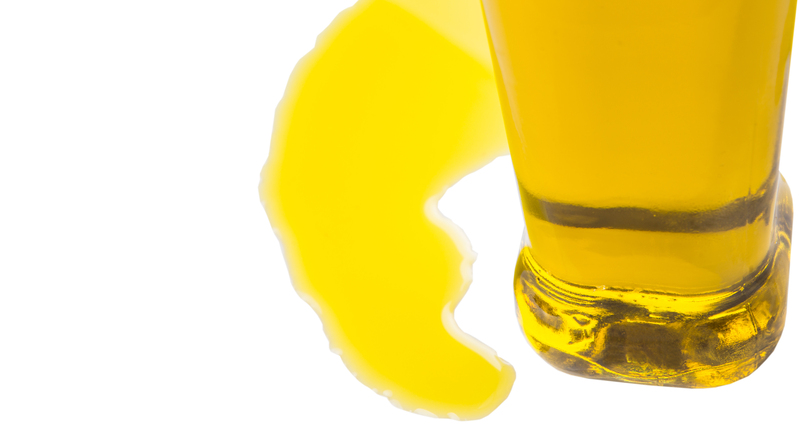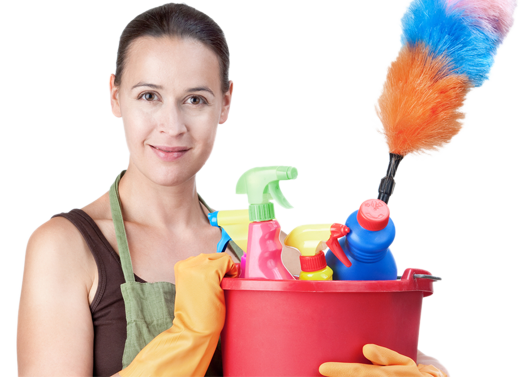Your Guide to Pristine Cleanliness for uPVC Window Frames
Posted on 16/06/2025
Your Guide to Pristine Cleanliness for uPVC Window Frames
uPVC (unplasticized polyvinyl chloride) window frames are a top pick for modern homes thanks to their durability, energy efficiency, and low-maintenance qualities. However, even the sturdiest uPVC windows deserve regular care to remain spotless and as good as new. This comprehensive guide unpacks powerful, easy-to-follow tips and techniques for achieving and maintaining pristine cleanliness for uPVC window frames. Whether you're a meticulous homeowner or a property manager, let's unlock the secrets to gleaming, dirt-free windows!

Why is Cleaning Your uPVC Window Frames Important?
Your uPVC window frames silently endure the daily onslaught of dust, weather elements, and potential pollutants. Over time, neglect can lead to unsightly discolouration, accumulation of grime, or worse - deterioration of the material. Cleaning not only enhances the appearance of your property, but serves critical protective and hygienic functions:
- Prevents permanent staining and yellowing.
- Reduces maintenance costs by extending lifespan.
- Improves the healthiness of living spaces by removing mold, pollen, and bacteria.
- Keeps your windows easy to operate by avoiding dirt buildup.
Understanding uPVC Window Frames: Benefits and Special Care
uPVC frames are renowned for their resistance to rot, warping, and corrosion. Unlike traditional wooden frames, they don't require regular sanding or painting. Even so, regular and correct cleaning is essential. Here's why:
- Preservation of Material Integrity: Routine cleaning maintains the original finish and prevents surface abrasion.
- Mould and Mildew Prevention: Dampness and organic debris trapped in the frames can promote fungal growth.
- Allergy Control: The frame's grooves collect pollen, dust, and pet hair, which can trigger allergies if left unchecked.
What You'll Need to Clean uPVC Window Frames
Cleaning your uPVC windows doesn't require expensive equipment. In most cases, simple household items will get the job done. Assemble the following before you start:
- Soft microfiber cloths
- Non-abrasive sponge
- Mild liquid detergent or specialized uPVC cleaner
- Basin or bucket of lukewarm water
- Soft-bristled brush (for grooves and crevices)
- Spray bottle with water
- Vinegar (optional, for stubborn stains)
- Vacuum cleaner with a brush attachment
- Rubber gloves
- Old toothbrush (for detail cleaning)
Tip: Avoid using abrasive pads, metal scrapers, or harsh chemicals like bleach or acetone, as these can damage the finish of your uPVC window frames.
Step-by-Step Deep-Cleaning Routine: Sparkling uPVC Window Frames
Step 1: Preparation and Initial Dust Removal
- Open all windows and remove any blinds or curtains to give clear access to the frames.
- Use a vacuum cleaner with a soft brush attachment to remove loose dust, cobwebs, and debris from the entire frame, including hinges and corners.
Step 2: Washing the Frames
- Mix a few drops of mild liquid detergent in a basin of lukewarm water.
- Dampen your sponge or microfiber cloth in the soapy water and gently wipe the window frames, working from the top down.
- For grooves and joints, use a soft-bristled brush or an old toothbrush, focusing on any stubborn dirt.
- Note: Avoid soaking the windows with excessive water, as this can seep into hinges and damage internal mechanisms.
Step 3: Rinsing and Drying
- Rinse surfaces using a spray bottle filled with clean water, or wipe with a separate damp cloth.
- Immediately dry the frames with a fresh microfiber cloth to prevent water spots and restore shine.
Step 4: Removing Persistent Stains or Marks
- If normal cleaning hasn't shifted stubborn marks (like bird droppings or ingrained grime), apply a solution of one part vinegar to four parts water using a sponge. Let it sit for 5-10 minutes, then gently buff away the stain.
- For especially persistent stains, invest in a specialized uPVC cleaner (always checking manufacturer guidelines beforehand).
- Important: Rinse immediately after using any stronger cleaning solution to avoid damaging the frame's finish.
Step 5: Cleaning the Seals and Moving Parts
- Wipe down the window seals (rubber gaskets) with the mild soapy mixture, then rinse and dry.
- Check and clean the hinges and locking mechanisms.
- Lubricate moving metal parts with a light application of silicone spray every 4-6 months to keep windows opening smoothly.
Expert Tips for Maintaining Pristine uPVC Window Frames
Consistent cleaning isn't just about gleaming surfaces - it's also about safeguarding the longevity and performance of your windows. Here are actionable tips every homeowner should know:
- Adopt a regular cleaning schedule. Aim for comprehensive cleaning at least twice a year, with spot maintenance as needed.
- Perform seasonal inspections to catch early signs of damage, condensation, or dirt buildup.
- Take extra care near coastal or urban environments where salt and pollution can accumulate more quickly - clean more frequently if needed!
- Protect the frames during construction or redecorating by covering window spaces to prevent the buildup of paint, plaster, or dust.
- Never use high-pressure washers, which can force moisture into seals and potentially damage your uPVC window frames.
Frequently Asked Questions About uPVC Window Frame Cleaning
Can I use bleach or ammonia-based cleaners on uPVC window frames?
No, avoid harsh chemicals such as bleach, ammonia, or acetone, which can harm the protective finish of uPVC. Always rely on mild, diluted cleaning solutions or specialized uPVC frame cleaners.
What is the best way to clean yellowed uPVC frames?
Yellowing can result from prolonged UV exposure or the use of incorrect cleaning agents. Occasionally, a specialized restoring cream certified for uPVC surfaces can revive the whiteness. For mild cases, a vinegar solution may help. Severely discoloured frames may require professional restoration.
How do I remove mold from my uPVC window frames?
First, wear gloves and a mask for safety. Clean visible mold with a solution of warm soapy water, then follow with diluted white vinegar on affected patches. Ensure the room is well ventilated. Never mix bleach and vinegar or use undiluted vinegars, as both can affect the frame's integrity.
Can I use a steam cleaner on uPVC windows?
Steam cleaners are generally not recommended for internal uPVC window frames, as excessive heat and moisture can weaken seals and rubber components. Stick with gentle manual cleaning for the best results.
Do's and Don'ts for Flawless uPVC Window Frame Care
- Do use soft, non-abrasive cloths and brushes only for uPVC cleaning.
- Do test any new cleaning product on a hidden area to avoid unwanted reactions.
- Do keep frames dry after cleaning to reduce the risk of water spots and streaking.
- Don't let mud, bird droppings, or pollutants sit for weeks - address them promptly to prevent staining.
- Don't use abrasive pads, steel wool, or sharp utensils, as they will scratch and dull the surface.
- Don't neglect the moving and hidden parts: clean and lubricate all hardware components.
Special Topics: Tackling Tough Stains and Problem Areas
Paint, Varnish, or Adhesive Spills
If accidental splashes of paint, varnish, or sticky labels mar your upvc frames:
- Act quickly: While the spill is fresh, gently peel or dab away as much as possible.
- For dried residues, use a uPVC-safe solvent or specialist remover, following the instructions meticulously. Avoid universal scrapers or aggressive solvents.
- Rinse thoroughly and dry immediately after treatment.
Dealing with Scratches and Scuffs
Scuffs or minor scratches may appear after years of service. While deeper gouges require professional attention, surface marks can sometimes be polished out with a uPVC color restorer or cream. Test products on a hidden section first!
Faded or Weathered Frames
Sunlight and pollution may cause frames to dull over time. While regular cleaning helps, occasionally applying a uPVC restoration cream can rejuvenate lost gloss and color. Always read the manufacturer's recommendations before use.
How to Prevent Future Problems: Maintaining Immaculate uPVC Frames
It's easier (and more cost-effective) to keep your uPVC window frames in top shape than to restore them after neglect. Adopt these habits:
- Wipe down window frames monthly in high-traffic or high-dust environments.
- Regularly check seals, tracks, and drainage holes for blockages or buildup.
- Clean up spills, splashes, mold, or bird droppings as soon as possible.
- Apply a dedicated uPVC conditioner or cream annually to maintain shine and UV protection.
Eco-Friendly and Safe Cleaning Solutions for uPVC Frames
If you prefer green cleaning alternatives, look to these solutions for uPVC window frame cleaning:
- Vinegar-based solutions: An effective gentle degreaser and stain remover.
- Baking soda paste: Useful for very mild abrasion on stubborn marks.
- Lemon juice: Natural disinfectant and deodorizer; mix with water for gentle cleaning.
Pro Tip: Always rinse natural cleaning products thoroughly and test them on an inconspicuous area first to avoid discoloration.

Conclusion: Lasting Cleanliness for Your uPVC Window Frames
Maintaining pristine uPVC window frames is a small investment of time for a massive payoff in aesthetics, efficiency, and property value. With regular, thoughtful cleaning and a few specialist tips, your windows can remain as gleaming and inviting as the day they were installed. Make window frame cleaning part of your routine, and enjoy uninterrupted views from your spotless, low-maintenance uPVC windows for years to come!
Share Your Sparkle! Got Tips for uPVC Frame Care?
Have you discovered a magic method or eco-friendly trick for uPVC window frame cleanliness? Share your experience or questions in the comments below! Let's help everyone's windows shine.




